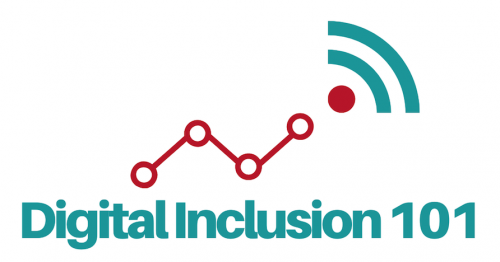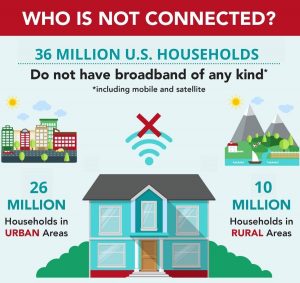
Across the country, community organizations, libraries, local governments, and others have been working to end the digital divide for decades. NDIA brought the community together to create shared definitions, share resources, and gain knowledge of what works and doesn’t. Digital inclusion is a multifaceted issue that takes time to understand and NDIA is here to help!
NDIA started working on digital inclusion in 2015 to support practitioners on the ground. NDIA is a community of digital inclusion practitioners and advocates working collaboratively to craft, identify, and disseminate financial and operational resources for digital inclusion programs while serving as a bridge to policymakers and the general public.
The Challenge
People of color, older adults, and those with lower levels of education and income are less likely to have broadband service at home (Pew Research Center). Based on data from the American Community Survey, 36 million households in total are without wireline internet access (wireline means fiber, DSL, and cable). Twenty-six million of these homes are in urban areas, while 10 million households in rural areas do not have wireline internet access. US households that do not have a computer or tablet in the home make up over half of the households without a device of any kind.
This illustrates that digital exclusion is both an urban and rural issue and the significant barrier to internet adoption is cost.
Definitions
Digital Inclusion
Digital Inclusion refers to the activities necessary to ensure that all individuals and communities, including the most disadvantaged, have access to and use of Information and Communication Technologies (ICTs). This includes 5 elements: 1) affordable, robust broadband internet service; 2) internet-enabled devices that meet the needs of the user; 3) access to digital literacy training; 4) quality technical support; and 5) applications and online content designed to enable and encourage self-sufficiency, participation and collaboration. Digital Inclusion must evolve as technology advances. Digital Inclusion requires intentional strategies and investments to reduce and eliminate historical, institutional and structural barriers to access and use technology.
Digital Equity
Digital Equity is a condition in which all individuals and communities have the information technology capacity needed for full participation in our society, democracy and economy. Digital Equity is necessary for civic and cultural participation, employment, lifelong learning, and access to essential services.
Digital Literacy
NDIA recommends the American Library Association’s definition of Digital Literacy via their Digital Literacy Taskforce: Digital Literacy is the ability to use information and communication technologies to find, evaluate, create, and communicate information, requiring both cognitive and technical skills.
Broadband Adoption: Rhinesmith, Colin. “Digital Inclusion and Meaningful Broadband Adoption Initiatives.” Evanston, IL: Benton Foundation, January 2016. benton.org/broadband-inclusion-adoption-report
Broadband adoption has traditionally been defined as residential subscribership to high-speed Internet access. But for those in the field working to increase the digital capacity of communities, broadband adoption is daily access to the Internet:
-
- At speeds, quality and capacity necessary to accomplish common tasks
- With the digital skills necessary to participate online
- On a personal device and secure convenient network

